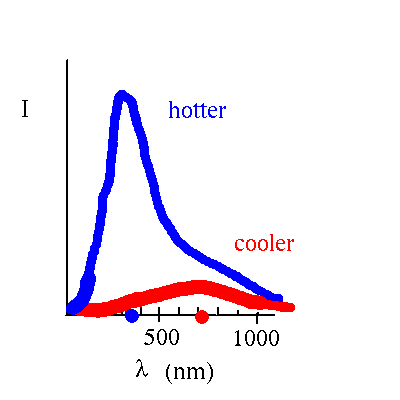

Here is a bigger picture (with ordinary white light)

Q. Why are they dark?
A. They are actually very bright. Just not as bright as the rest of the photosphere?
Q. Well, why are they darker than the rest of the photosphere?
A. Recall that hot gas radiates more, cooler gas radiates less.

Q. OK, why is the gas cooler?
A. First, we have to learn about magnetic fields.
This suggests a model of sunspots as places where magnetic field lines are concentrated and come out of the photosphere.

The sunspot is relatively cool because convective motion of the gas, which brings new, hot, gas to the surface, is inhibited.
Here is a picture showing the details of a sunspot group.
A test of this theory is to measure the magnetic field near sunspots.
Davison E. Soper, Institute of Theoretical Science, University of Oregon, Eugene OR 97403 USA soper@bovine.uoregon.edu